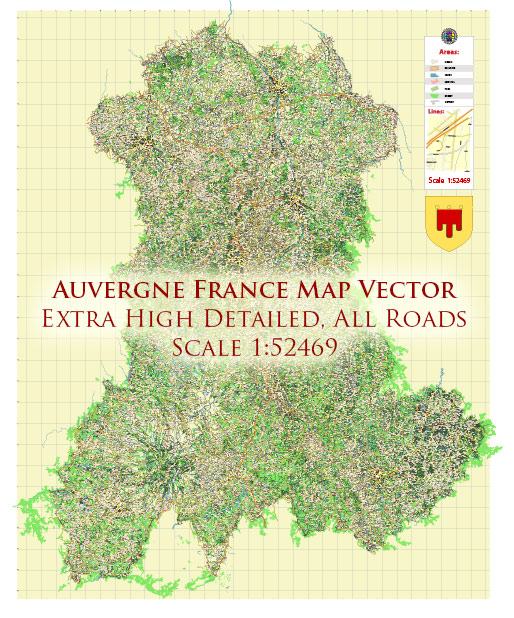The history of urban development in Auvergne, a region in central France, is a fascinating journey through time that reflects the region’s rich heritage, cultural influences, and geographical features. Here is a brief description of the historical urban development of Auvergne:
- Ancient Settlements: Auvergne has a long history of human settlement dating back to prehistoric times. The region was inhabited by the Arverni, a Celtic tribe, and later became part of the Roman Empire. Roman cities and roads were established, leaving their mark on the urban landscape. One of the notable Roman cities in Auvergne was Clermont-Ferrand, known as Augustonemetum during Roman times.
- Medieval Period: During the Middle Ages, Auvergne saw the rise of numerous feudal lords and the construction of fortified castles, which played a crucial role in the region’s urban development. Some of these castles, such as the Château de Murol, remain well-preserved and offer insights into medieval life.
- Religious Architecture: Auvergne is renowned for its Romanesque churches, which were built from the 10th to the 13th centuries. These churches feature distinctive architectural elements, including rounded arches, heavy columns, and intricate carvings. The Basilica of Notre-Dame du Port in Clermont-Ferrand and the Saint-Austremoine Church in Issoire are prime examples of Romanesque architecture.
- Renaissance and Beyond: The Renaissance period brought about changes in architectural styles. Many towns in Auvergne feature elegant mansions and townhouses from this era. The town of Riom is a notable example of Renaissance architecture in the region.
- Industrial Revolution: Like many other regions in France, Auvergne experienced significant changes during the Industrial Revolution. The development of railways, mining, and manufacturing had a profound impact on the urban landscape. Cities like Clermont-Ferrand saw growth and modernization during this period.
- 20th Century and Contemporary Development: In the 20th century, Auvergne continued to evolve with the expansion of transportation networks, the development of modern infrastructure, and the growth of urban areas. Cities in the region, particularly Clermont-Ferrand, became important industrial and administrative centers.
Today, Auvergne’s urban areas combine elements of its rich history with modern amenities and infrastructure. The region is known for its charming towns, scenic landscapes, and cultural heritage. The historical sites and architectural wonders in Auvergne provide a unique glimpse into the region’s past, making it a captivating destination for history enthusiasts and tourists alike.


 Author: Kirill Shrayber, Ph.D.
Author: Kirill Shrayber, Ph.D.